PART TWO OF TWO
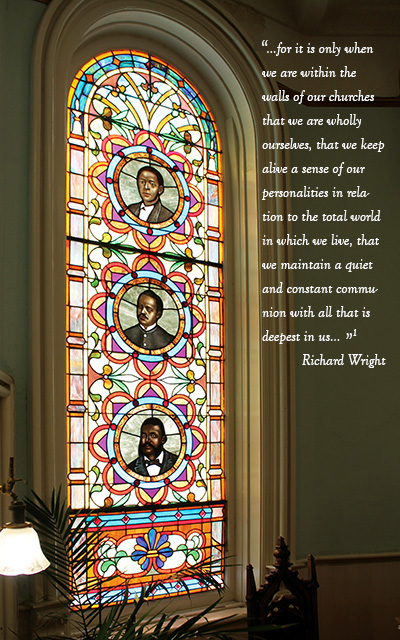
Stained glass window in the First African Baptist Church of Savannah, Georgia.
Christopher S. Hunter
Ground Zero
The First African Baptist Church (FABC), located in Savannah, Georgia, represents ground zero for my research. The current building was constructed by enslaved persons in the mid-1850s. FABC can trace its beginnings to the regular gathering of enslaved people who worked and lived on the Brampton Plantation, one of several large plantations located three miles from Savannah along the river.2 FABC was organized in 1773 by its founder, George Leile3. By 1830 the church had a membership of over 2,4004. The Savannah Baptist Church (known today as the First Baptist Church) sold their existing wooden church house to FABC for $1,500. This church once sat on the site of the current church. With continued growth into the 1850s, under the leadership of Andrew Marshall, FABC’s third pastor, the congregation constructed the current church house under the cover of darkness and by lantern. The new church was completed in 1859. This building became the first brick edifice owned by African Americans in the state of Georgia.5
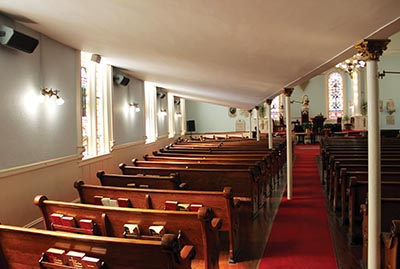
Interior of the First African Baptist Church of Savannah, Georgia.
Christopher S. Hunter
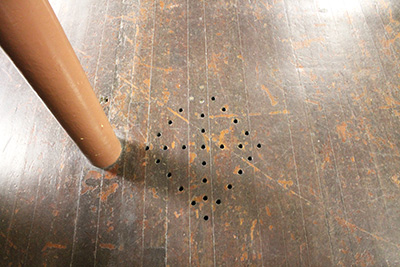
Kongolese spirit symbol in the First African Baptist Church of Savannah, Georgia.
Christopher S. Hunter
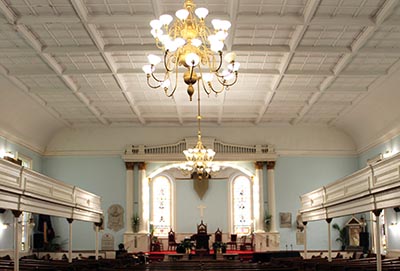
Original chandeliers in the sanctuary of the First African Baptist Church of Savannah, Georgia.
Christopher S. Hunter
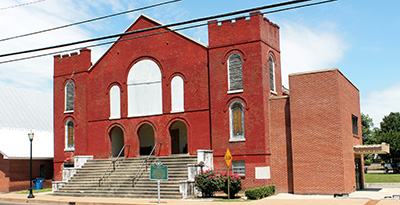
First Baptist Missionary Baptist Church, Clarksdale, Mississippi.
Christopher S. Hunter
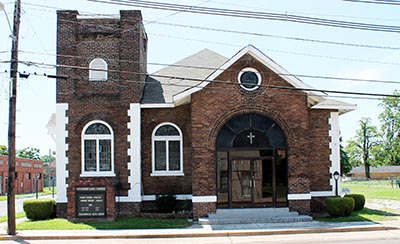
Friendship AME Church, Clarksdale, Mississippi
Christopher S. Hunter
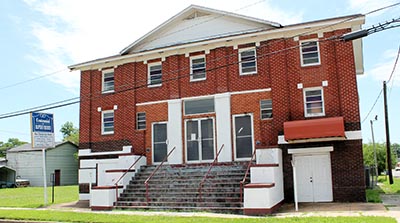
Centennial Missionary Baptist Church, Clarksdale, Mississippi
Christopher S. Hunter
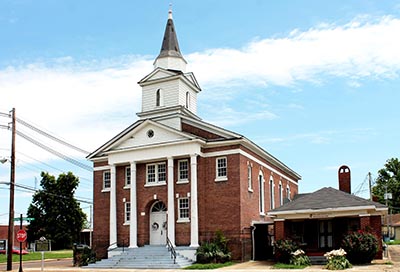
Haven United Methodist Church, Clarksdale, Mississippi.
Christopher S. Hunter
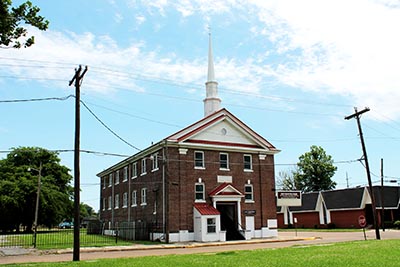
Metropolitan Missionary Baptist Church, Clarksdale, Mississippi
Christopher S. Hunter
The current church remained a red brick exposed building until the late 1940s, when stucco was applied to the exterior to achieve its current look. The church once had a wooden steeple rising one hundred feet, constructed as early as 1883, but it was destroyed by a hurricane a decade later.6
FABC is adorned with architectural details that tell its story. The original stained-glass windows, installed in the 1880s, feature the images of the first six pastors of the church.
The wood flooring on the lower level is original to the building, with several symbolic details drilled into the floor in the form of Kongolese spirit symbols, a rare African-influenced feature. The detail served a dual purpose – decoration, and ventilation for the crawl space under the church, where enslaved runaways hid on their journey north. These symbols, repeated throughout the lower level, are called “Yowa,” which is the Kongo sign of the cosmos and the continuity of human life.7
Wooden pews built by enslaved persons and original to the church are stored in the fellowship hall. A few years before electricity was introduced to Savannah in 1882, the congregation installed chandeliers that made the Savannah Morning News. The church certainly tells a story.
African American Church Architecture in a Mississippi Delta Town
The community of Clarksdale, Mississippi, a rural town of just under 15,000 residents,8 traces its roots back to the Choctaw and Chickasaw Indians. It became a farming and plantation town and remained agricultural into the 1900s. Many African Americans worked as sharecroppers there and developed their own communities, with churches at the center. Today, many of these church houses remain in the still nearly 82% Black town,9 illustrating the variety of church architectural styles used in the early 20th century.
First Baptist Missionary Baptist Church was founded in 1888, and the building was erected in 1918. The presence of twin tow- ers, with crenellation, each anchoring a corner of the building, is a typical façade treatment. The church’s windows with semi- circular arch header treatment are consistent with a Romanesque Revival style.
Friendship AME Church, erected in 1916, does not have a lower occupiable level so the stairs leading to the entry are not as dramatic as many African American churches. The corner tower, however, is typical as a formal element to the main façade.
Centennial Missionary Baptist Church is a little different. It was organized in 1910 and constructed and remodeled in 1917. The absence of a tower, which provides a symbolic anchor, is atypical in early African American church design. This church’s main façade is symmetrical in design, with a pediment detail – likely a later addition – centered above the entrance. A pediment is more typical of a Greek Revival architectural style, but in this case, there is no portico or columns. The façade features masonry pilasters instead.
Greek Revival style is more pronounced in the façade of the Haven United Methodist Church, which was organized in 1880 and constructed in 1923. The columns, portico, pediment, and symmetrical façade composition, highlighted by a tower located on axis with the entrance, suggest a visual language that, along with Gothic Revival, was very popular with the design of African American church design at the turn of the 20th century.
Metropolitan Missionary Baptist Church, built in 1927, also features a symmetrical façade, but lacks the formal element to classify it an example of a Greek Revival style. The presence, however, of the tower located on axis with the main entrance does serve to mark the main entrance, as well as highlight the symmetrical quality of the elements of the main façade.
These five churches are within blocks of one another, and their architectural character has similarities. They are all constructed with the bricks that were typical of urban African American church buildings. Each church has a centrally located entrance on the main façade of the building, with a series of steps ascending to the doors. Though the architectural style of each church is distinct, common elements remain, such as towers either centrally located or anchoring building corners, or both. The use of masonry on the buildings represented having reached a new level of stability and wealth to the congregations, as compared to rural church houses, generally constructed of wood.
Wallace Rayfield and the African American Architect
For pioneering Black architects in the early 20th century, church designs were central to their success. At this time African Americans mainly were being trained as architects at Historically Black Colleges and Universities (HBCU), with the primary schools for instruction being Tuskegee Institute, founded by Booker T. Washington, and Howard University. Those institutions’ early architectural graduates designed schools, medical facilities, and residences, but mainly houses of worship for a growing middle class of African Americans. Wallace Rayfield, considered the first African American architect to practice in Alabama, was one of those trailblazers.
Rayfield was born on May 10, 1873, in Macon, Georgia, the son of a railroad porter and a seamstress.10 Rayfield studied at Howard University and Pratt Polytechnic Institute before eventually earning his architectural degree from Columbia University in 1899.11 After working as an instructor at Tuskegee Institute, he moved to Birmingham and established the first Black-owned architectural office in Alabama.12 Wallace designed schools and homes for the growing Black middle class, but his primary focus was the design of churches. Rayfield’s designs were used around the world, in places as varied as Chicago, West Virginia and South Africa.
Rayfield is reported to have built 40 houses and 34 churches in the Birmingham area alone. He didn’t advertise himself as a Black architect, never including pictures of himself, using only his initials in advertisements, and adhering to a ‘mail-order’ approach.13 Rayfield authored several books that helped him market his church designs to various denominations, including Book of Designs: Churches, and his books of plans such as Plans for Baptist Churches, Plans for Methodist Episcopal Churches, and Designs for Lutheran Churches.14
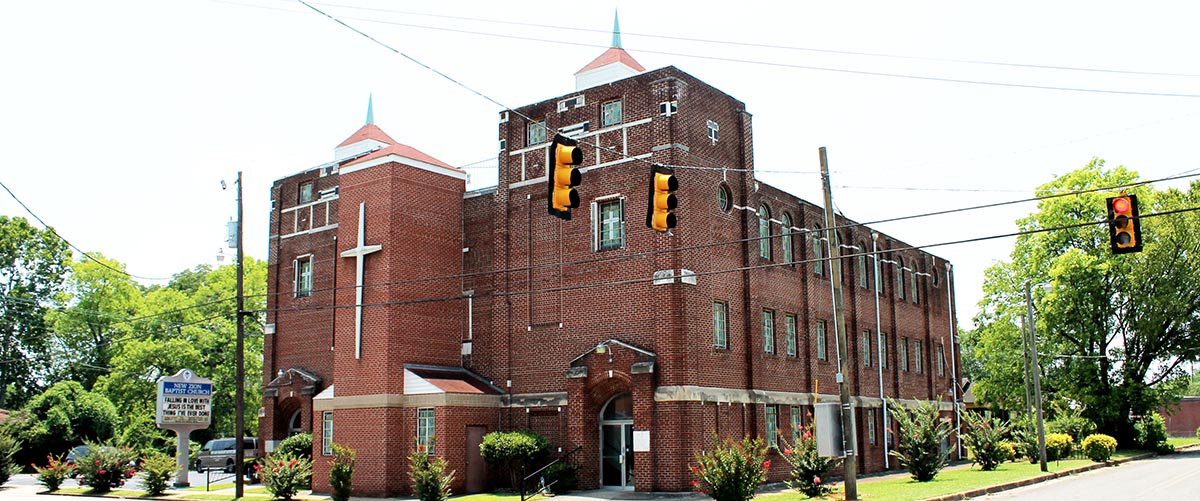
New Zion Baptist Church in Bessemer, Alabama
Christopher S. Hunter
New Zion Baptist Church in Bessemer, Alabama features elements suggesting a Romanesque Revival, a style seen in many of the churches Rayfield designed in Birmingham and northern Alabama. Rayfield was likely influenced in his use of masonry, a material quality of Romanesque Revival, by the buildings of Tuskegee Institute, where the students made the bricks. Similar Birmingham-area examples of work include the 23rd Street Baptist Church (1908), the South Elyton Baptist Church (1940s), and the 16th Street Baptist Church (constructed between 1909 and 1911). All these churches remain standing and provide worship services.
Moving Forward
The architecture of these buildings I visited is inherently worthy of study, but the need for deeper examination of the value these buildings have had to their parishioners and community cannot be understated. Many of the congregations have moved on from these churches – built more modern buildings and vacated their original structure – or they are dwindling and cannot afford to maintain these buildings. There are many stories that surround these churches, and they must be captured and preserved, providing depth and substance to the buildings they occupied, while it is still possible.
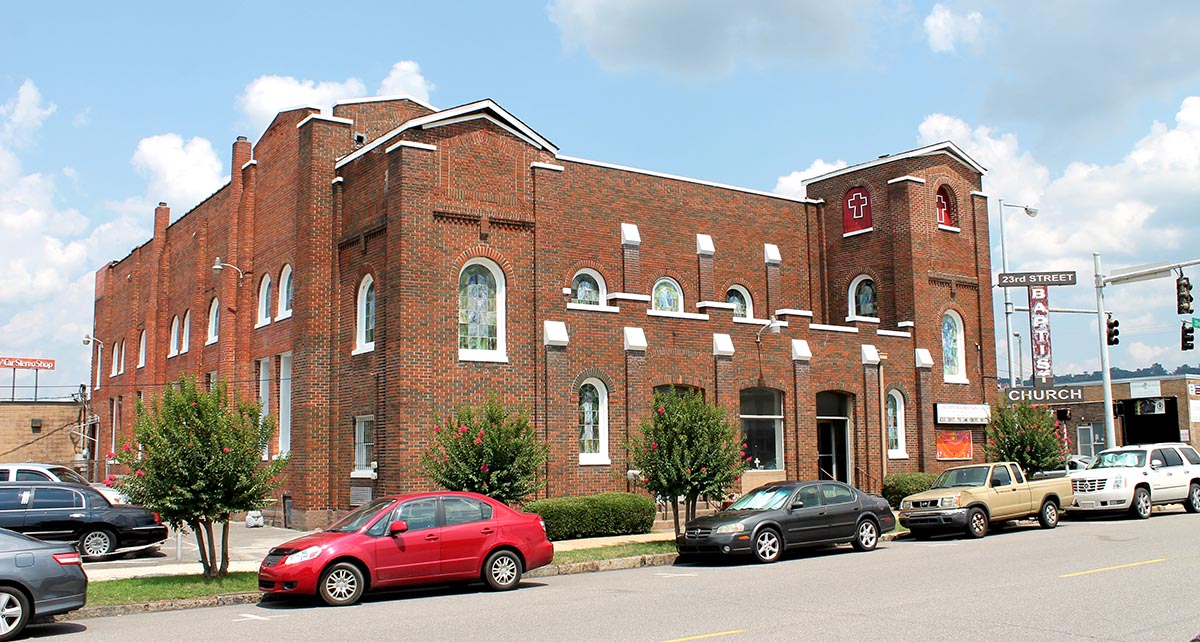
23rd Street Baptist Church in Birmingham, Alabama
Christopher S. Hunter
Notes
2Hunter, Christopher. ‘The First African Baptist Church: A Study of the Architectural Design and Construction of a 19th Century Church House.’ Masters Thesis, Texas A&M University, 2015. Texas A&M University Libraries http://oaktrust.library.tamu.edu/handle/1969.1/155727
3First African Baptist Church Website. https://firstafricanbc.com/history.php
4Hunter, Christopher. ‘The First African Baptist Church: A Study of the Architectural Design and Construction of a 19th Century Church House.’ Masters Thesis, Texas A&M University, 2015. Texas A&M University Libraries http://oaktrust.library.tamu.edu/handle/1969.1/155727
5McDonogh, Gary Wray. Black and Catholic in Savannah, Georgia. Knoxville, Tennessee: The University of Tennessee Press, 1993.
6Savannah Morning News Timeline 1800s (2010) Savannah Morning News. http://savannahnow.com/1800s-anniversary-stories/2010-03-26/savannah-morning-news-timeline-1800s.
7Thompson, Robert Farris. Flash of the Spirit: African and Afro American Art and Philosophy. New York. Vintage Publishing, 1984.
82020 United States Census
9Ibid.
10Allen R. Durough. “The Architectural Legacy of Wallace A. Rayfield.” Tuscaloosa, Alabama. The University of Alabama Press, 2010, 1.
11″African American Architects A Biographical Dictionary 1865-1945“. Edited by Dreck Spurlock Wilson. New York, New York, Routledge Publishing, 2004, 338.
12Ibid., 338.
13Ashley Boyd. ‘Work of Tuscaloosa’s first black architect shines in churches,’ Tuscaloosanews.com. Posted on January 31, 2010. http://www.tuscaloosanews.com/news/20100131/work-of-tuscaloosas-first-black-architect-shines-in-churches. Accessed May 29, 2018.
14Allen R. Durough. “The Architectural Legacy of Wallace A. Rayfield.” Tuscaloosa, Alabama. The University of Alabama Press, 2010, 32
